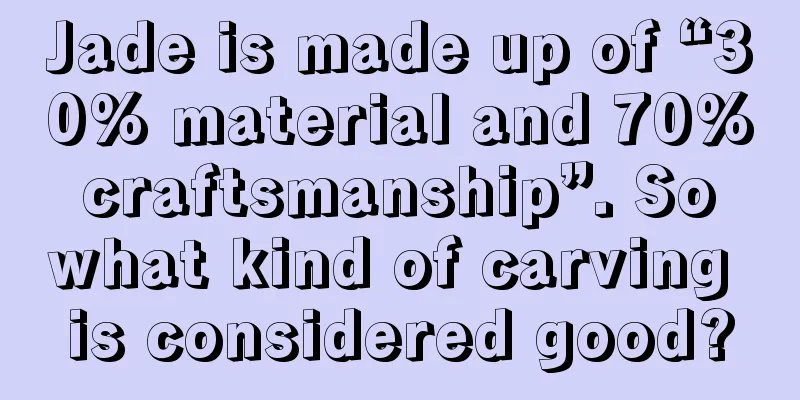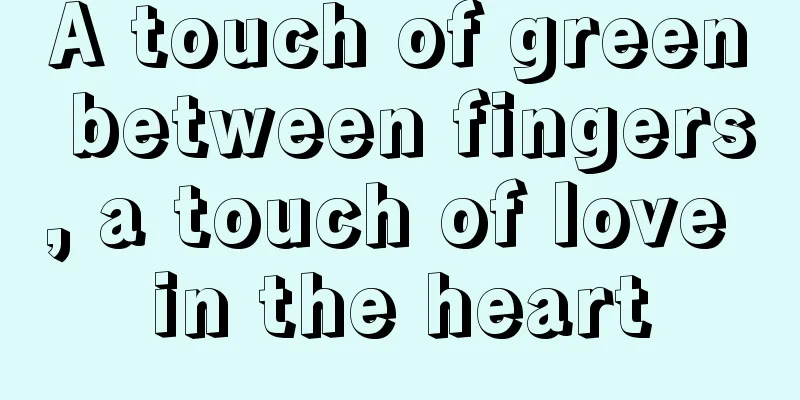Jade identification: Teach you how to distinguish between A, B and C jade in 5 minutes, super practical tips

|
Jade is one of the popular accessories. Many friends like its green color and clarity, but few people know that the market is flooded with artificially processed and dyed jade. So how to identify them? Today, Liu Yuxuan, an appraiser of Ming and Qing jade from Yujian, will tell you the key points of identifying jade ABCD goods. First of all, we need to determine what ABCD means. Grade A jade is natural jade with pure color that has not been processed. Grade B jade is artificially dyed, and grade C jade is jade that has been dyed and processed. Grade D jade is jade made of other materials. Jade is actually a very easy to identify jewelry. Generally, jade’s grade can be easily identified through certificates, but we can also identify it with the naked eye before buying. First of all, we need to know that the color of jade is produced because chemical substances in the stone produce chemical changes, and then the color is produced during the long natural growth. The color in jade will have certain growth traces, just like a dot of ink halo in the water. There is a center point, which we call the color root of jade. After having the color root, the color of jade will be blurred and diffused. For example, A-grade jade will definitely have a color root, and its color is spiritual. Ultraviolet light identification Merchants nowadays are more cunning. They do not dye the entire item, but dye it piece by piece. However, this dyeing can be revealed by ultraviolet light, because the chemicals used to dye jade will fluoresce under ultraviolet light. Therefore, by using ultraviolet light, it is possible to determine whether the green color of jade is dyed. This is a very convenient way of identification. Internal Texture The second thing to look at is its internal texture. This ring is dyed in a different way. By adjusting its inside and dyeing it with acid, if you observe carefully with the naked eye, you can see the spider texture inside. This spider pattern is caused by cracks created when dye is injected into the jade, which is why this spider pattern appears. Fluorite and water foam Nowadays in Myanmar and other places there are many people selling fluorite and water foam pretending to be jade. Fluorite looks green like jade, but it is not jade. Its composition is similar to glass. Shuimaozi is a companion mineral of jadeite, but its price and density are much lower than those of jadeite. Although it is relatively transparent, it does not have the luster and brightness of jadeite, and its value is far less than that of jadeite. fcgc66 fcpf18 |
Recommend
Take stock of several types of jadeite with great appreciation potential and see if you have any~
Nowadays, many jade lovers buy jade not only base...
The old blue water jadeite was sold for six figures. It is completely free of sand and has a fine texture. The effect of picking it up is very impressive!
Blue water jade is a relatively special type of j...
Is blue jadeite really that common?
The blue water material shared today may be criti...
Share the creation process of a piece of top-quality yellow-green jadeite
As the saying goes, "If jade is not carved, ...
Experts explain the hidden rules of the jade industry in detail about playing with jade and doing jade business!
Whether you are playing with jade or doing jade b...
Do you know how to identify jadeite?
Chinese people's feelings towards jade are ve...
Jade carving, highly difficult intaglio carving technique!
China is a vast country with rich resources. Ther...
A collection of top-quality jadeite with a value of over 10 billion yuan, truly the best treasure in the closet!
As the saying goes: A piece of jade is worse than...
How much is the wisest thing to spend on jade?
How much is the wisest thing to spend on jade? Le...
How to buy jadeite at a good value? If you don't understand this, you will suffer a great loss...
I believe many people want to know how to buy jad...
How should a novice cut jadeite rough stone?
When cutting jadeite rough stone, you must know t...
The small jade egg-shaped face is so expensive.
Many friends who are new to jade usually have a m...
Have you ever encountered jadeite with cracks? How did it come about?
Cracks in jade are a fatal defect, especially in ...
Jade Market Investment Analysis
1. Jade from the perspective of value By visiting...
Perhaps an unintentional turn will result in a stunning and gorgeous transformation!
Still as water Consistent Breathtaking Jadeite, D...









